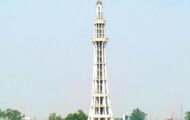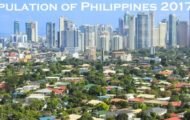São Paulo is a municipality located in the southeast region of Brazil. The metropolis is the most populous city in Brazil, the Americas, and in the Southern Hemisphere. The municipality is an alpha global city also Earth’s 12th largest city proper by population. The city is the capital of the homonymous state of São Paulo, Brazil’s most populous and wealthiest state.

The metropolis is also home to several of the tallest buildings in Brazil, including the Mirante do Vale, Edifício Itália, Banespa, North Tower and many others. It is home to monuments, parks and museums such as the Latin American Memorial, the Ibirapuera Park, Museum of Ipiranga, São Paulo Museum of Art, and the Museum of the Portuguese Language. São Paulo hosts the world’s largest gay pride parade. It is headquarters of the Brazilian television networks Band, Gazeta, Record and SBT.
In 2016, Sao Paulo had native inhabitants from 196 different countries. People from the city are known as paulistanos. According to a report from 2011, São Paulo was expected to have the third highest economic growth in the world between 2011 and 2025.
The city has the largest economy by GDP in Latin America and Southern Hemisphere, the city is home to the São Paulo Stock Exchange, Paulista Avenue which is the economic core of São Paulo. The city has the 10th largest GDP in the world which alone accounts to 10.7% of all Brazilian GDP.
POPULATION OF SAO PAULO IN 2017:
Talking about population, in order to check out the population of Sao Paulo in 2017, we need to have a look at the population of the past 5 years. They are as per the following:
- 2012 – 11.73 million
- 2013 – 11.81 million
- 2014 – 11.89 million
- 2015 – 11.97 million
- 2016 – 12.04 million
The population of Sao Paulo in 2017 is estimated to be 12.04 million + 0.08 million = 12.12 million. So, the population of Sao Paulo in the year 2017 as per estimated data = 12.12 million.
SAO PAULO Population 2017 – 12.12 million(Estimated)
According to IBGE, Brazil’s main government research institute, the population in the city of São Paulo is about of 11,967,825 million inhabitants. The estimated population of Sao Paulo in 2017 is q2 million inhabitants.
The population of the wider São Paulo metropolitan area is 21,090,791, making it the largest metropolitan area in Brazil, South America and the Southern Hemisphere. São Paulo is however only the second or third largest metropolitan area in the Americas, after Mexico City and, depending on how its population is counted, New York City. São Paulo State is so populous that it is home to more people than many countries. In fact, the only country in South America (outside of Brazil) with a higher population than São Paulo is Columbia. In Brazil, 81.3% of the population lives in urban areas even though the amazon rainforest covers up to 57% of the total area of Southern hemisphere’s largest country. This urban concentration helps to explain why it is more expensive to rent an office in São Paulo than in New York City.
São Paulo is the largest city of Brazil and the largest city proper in the Americas and the southern hemisphere. It’s also one of the top 10 largest metropolitan areas in the world. São Paulo is a global city with a strong influence in the arts, entertainment, finance and commerce, and the city hosts the largest gay pride parade in the world. Known colloquially as Sampa. Latest official estimates put the 2016 population of São Paulo (the city) at 12,038,175. This makes São Paulo the 11th largest city proper in the world. Additionally, the population of the São Paulo urban area, which includes a number of smaller commuter towns nearby has been estimated by the Brazilian government to be 32.2 million people. This would make São Paulo the second largest urban area in the world, after the Tokyo-Yokohama urban area.
DEMOGRAPHY OF SAO PAULO:
The demographics of São Paulo City are evidence of a uniquely large and ethnically diverse metropolis, with 111 different ethnic groups.. São Paulo City is home to more than 11 million people, accounting for about 25% of the population of São Paulo State. Portuguese remains the most widely spoken language and São Paulo is the largest city in the Portuguese speaking world.
São Paulo metropolitan region totals 847 thousand students enrolled in institutes of higher education (mainly colleges and universities), 90% are enrolled in private institutions and 10% in public ones.
In 2013, São Paulo ranked 6th in Forbes List of the Top 10 Billionaire cities. There are 26 billionaires (up from 19 last year) with primary residences in São Paulo. Together, their total net worth is superior to $120 billion. The average billionaire living is São Paulo is worth $4.65 billion.
POPULATION DENSITY AND GROWTH RATE IN SAO PAULO:
At the 2010 IBGE Census, São Paulo was home to 10,659,386 people, a figure that is estimated to have grown to 11.9 million in 2016. The density in the city proper is 7,216.3 people per square kilometer (18,690 per square mile), but the metropolitan region is home to over 21 million people, with a much lower density of 2,469 people per square kilometer.São Paulo is a rapidly growing city. When the 2010 IBGE census was carried out, the population of São Paulo was 10.7 million people. This had increased to 11.9 million people by 2016.However population growth in São Paulo today could be considered slow in comparison to its growth during the 1950s, 60s and 70s. Between 1950 and 1980, São Paulo’s population almost quadrupled from 2.2 million in 1952 to 8.5 million in 1980.
São Paulo overtook Rio de Janeiro as the largest city in Brazil in 1980.
FACTS ABOUT SAO PAULO:
1. More people of Japanese descent live in São Paulo than in any other city outside of Japan. – The Japanese community of São Paulo is the largest settlement of Japanese outside of Japan.
2. The nickname of the city is Land of drizzle (terra da garoa) for its notable rainy spells, however the more popular nickname for the city is Sampa.
3. In 1958, a rhinoceros was a candidate in São Paulo’s city council elections. It did not win!
4. The Italian community in the city is also huge and of the 11 million inhabitants of São Paulo it is said that 60% have some Italian ancestry.
5. The city has the largest number of helicopters of any city in the world with around 2000 flights per day taking place.
6. A city with 11 million people needs a big healthcare system with 217 hospitals in the city and over 130,000 people working in the healthcare industry.
7. SP has the highest GDP of Brazil and South America and ranks 10th in the world list.
Find Latest Sao Paulo Population in 2018



